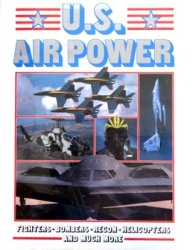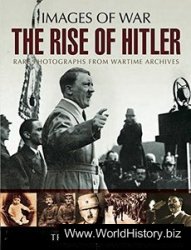Leadership of Operation Vistula was entrusted to General Mossor, who had joined the communist party only in 1945. Mossor had been a soldier in Pilsud-ski’s legions during the First World War, and a military planner in interwar Poland. He had been involved in anti-Ukrainian actions before the war, and had taken part in Operation Rzeszow in 1946. The military operations against the UPA, and the army’s role in resettlement, were apparently planned by two Soviet Poles: Colonel Michal Chilitiski, chief of staff of the operation, and Lieutenant Colonel Waclaw Kossowski, who was detailed to head the staff’s operations section.77 Operation Vistula joined infantry divisions with internal security forces into a force of 19,335 men. Most of these soldiers were veterans of the war against the Polish underground. Having spent a year shooting at fellow Poles, often former comrades in arms, these soldiers must be considered as appropriately demoralized. At the time Operation Vistula began, the Operation Group outnumbered the UPA something like twenty to one.78
Mossor, Kossowski, and Chilirnski were concerned in the first instance with
The destruction of the UPA. When operations began in late April 1947 in the Rzeszow area, Mossor was unimpressed by the performance of his soldiers in battle.79 Realizing that encirclement tactics were failing against more committed and experienced enemy troops, Polish commanders decided to simply pursue every UPA unit until it was cornered and destroyed. This was an old Soviet antipartisan tactic. It never defeated an UPA unit in Poland, since UPA soldiers simply broke into small groups and regrouped later, but it did exhaust and frustrate the Ukrainians. As the war became a hunt, Polish communications were characterized by a thorough familiarity with Soviet protocols of antipartisan warfare. Polish commanders carefully explained how to use police dogs to trace retreating partisans through the forest, how to destroy the reinforced bunkers where UPA soldiers took shelter, and the like.80 When trapped in their bunkers, UPA soldiers often committed suicide rather than surrender. In so doing they were following orders. They were also avoiding the torture that surely awaited them if they were taken alive.81
Meanwhile, the dispersion task proceeded, first in Rzeszow palatinate, then in Lublin and Cracow palatinates. In the four months which followed 28 April 1947, the Operation Group moved some 140,660 individuals identified as Ukrainians from southeastern to northern and western Poland. Just as the first round of evacuations and deportations had removed about 75 percent of the Ukrainians remaining in Poland in 1944 - 46, Operation Vistula resettled about three-quarters of those who remained in 1947.82 Operation Vistula perfected tactics used in Operation Rzeszow. Soldiers would enclose a village and seal off the area to prevent UPA intervention, then a military or security services officer would read a list of names of those to be resettled. Those identified as Ukrainians were given a few hours to pack, and then relocated to intermediary sites. If men tried to escape when the army encircled the village, they were shot. In general men moving about during the operation were likely to be shot. In some cases Polish soldiers shot men in flight, only to find the “P” for “Pole” in the German identity documents in the dead men’s pockets. Members of households where men were absent were tortured in order to locate UPA soldiers. Several villages were burned as their inhabitants watched.83 Vistula was distinguished from Rzeszow by the more complicated role played by the security services, since Polish authorities were now charged not only with deportation but also with a complex resettlement inside Poland. The final destination and degree of dispersal of groups was determined by the judgment of intelligence officers, whose colleagues were waiting to receive their instructions in sealed envelopes at the end of the line.
Military and security officers relied on local informers, of both Polish and Ukrainian nationality, to denounce their neighbors as UPA partisans. Individuals singled out as Ukrainian partisans could be judicially murdered or sent to a concentration camp. Military courts, empowered to judge civilians, sentenced at the very least 175 Ukrainians to death for collaborating with the UPA.84 Most of these sentences were carried out the same day. About 3,936 Ukrainians, including 823 women and children, were taken to the Jaworzno concentration camp, a wartime affiliate of the Auschwitz-Birkenau complex. There, routine torture was accompanied by typhus epidemics and shortages of food and clothing.85 Several dozen Ukrainians died in Jaworzno, including two women by suicide. Twenty-seven more Ukrainians, mostly infants and the aged, died on trains during resettlement. In terms of the number of people repressed, imprisoned, sentenced to death, and actually killed, Operation Vistula was the most massive exercise of terror by the Polish communist regime during the entirety of its existence.
The 1947 resettlement defeated the UPA in Poland. Once most Ukrainians had been resettled, resistance was not only next to impossible, it was essentially pointless. Most soldiers had been fighting to protect their homes, and now they had lost. Those hundreds wishing to continue the fight against communism had little reason to do so in Poland. Chased unceasingly by Polish troops, UPA battalions broke ranks.86 Some partisans allowed themselves to be resettled in northwestern Poland; others fought their way across the sealed borders to Czechoslovakia, whence several hundred reached the West. Incredibly, hundreds crossed the sealed Soviet border to fight on with the main body of the UPA. The flight of the UPA marked the final step in the consolidation of the new Soviet-Polish border, the homogenization of the Polish population, and the liquidation of armed resistance to the Polish regime.
Chapters 6 and 7 were devoted to an evocation of the historical durability and modern contestation of Galicia and Volhynia; chapters 8 and 9 have described the rapid transformation of several inheritances from the old Commonwealth (1569-1795), from the multinational empires (1795-1918), and from the brief period of Polish rule (1918 - 39). In eight years, between September 1939 and September 1947, German power advanced and withdrew, Soviet power was installed twice, East European Jewish civilization was destroyed, Poles and Ukrainians ethnically cleansed each other, and a new and durable frontier separated Poles from Ukrainians. Operation Vistula ended the history of Galicia and Volhynia, and began the history of Western Ukraine and southeastern Poland.
The conclusion of Operation Vistula coincided with the consolidation of communist power in Poland; the homogenization of Poland coincided with the establishment of a communist power in Eastern Europe. The rejection of the Marshall Plan in summer 1947 by East European states brought down Churchill’s metaphorical Iron Curtain. As world war gave way to cold war, national questions were settled, forgotten, or transformed. Driven from Poland, the UPA fought on in the Soviet Union for nearly a decade; Mykola Lebed’, the Ukrainian nationalist perhaps most responsible for the Volhynian terror that began the Polish-Ukrainian civil war, was employed by U. S. intelligence.87 Romen Shukhevyeh, the UPA commander, died in battle in Soviet Ukraine. The new European order was built on the presumption that Poland, a national state ruled by communists, could align with the Soviet Union. As we shall see in the next two chapters, eastern questions played a special role in the consolidation of Polish communism and the Soviet-Polish alliance—and then in their disintegration.




 World History
World History









